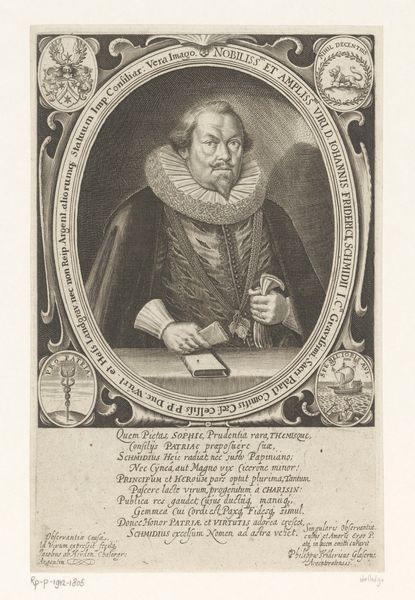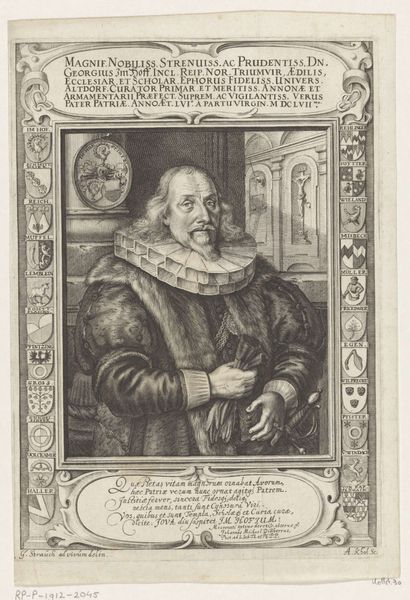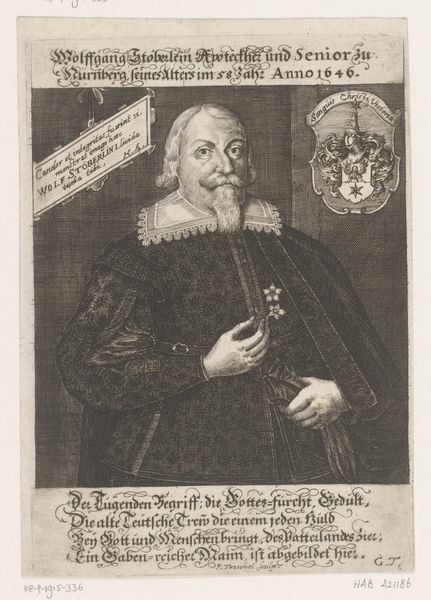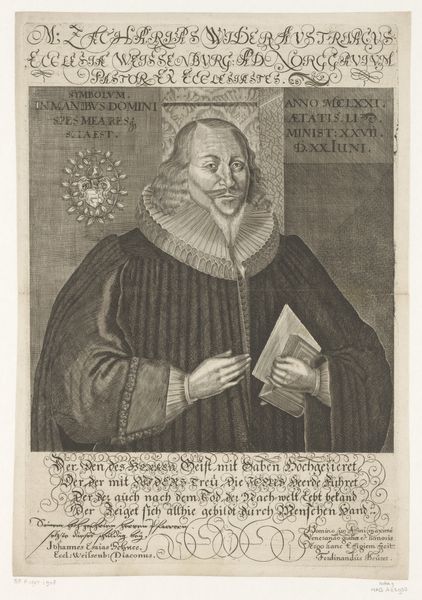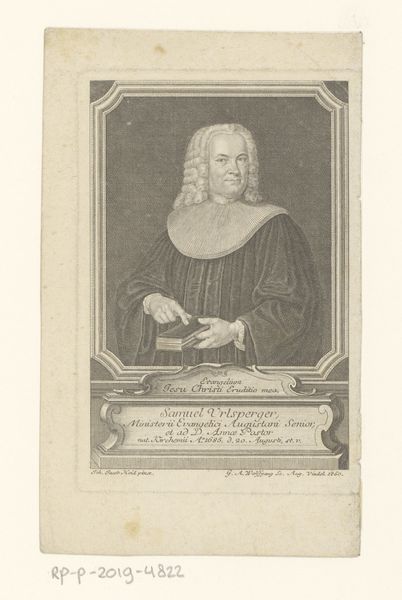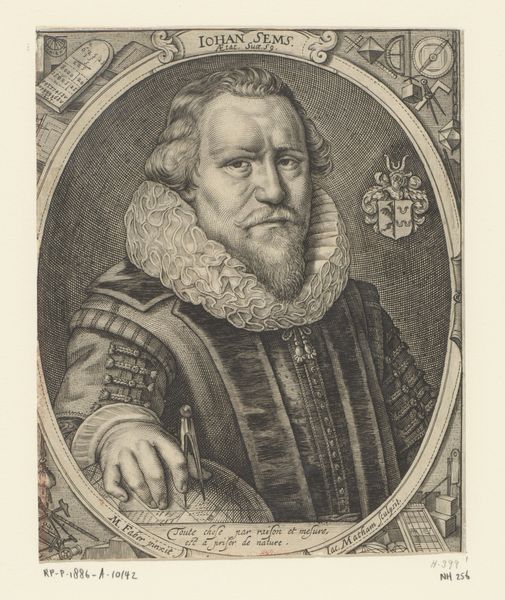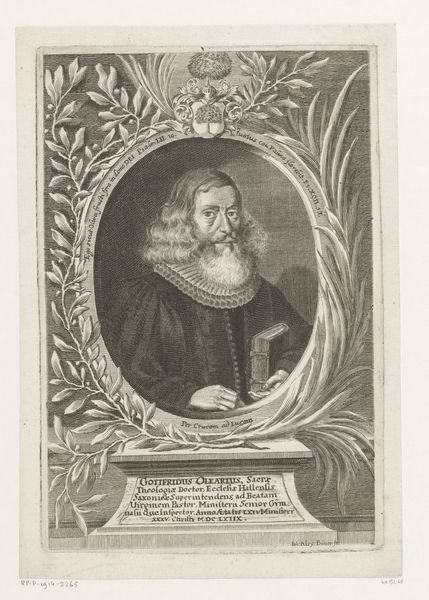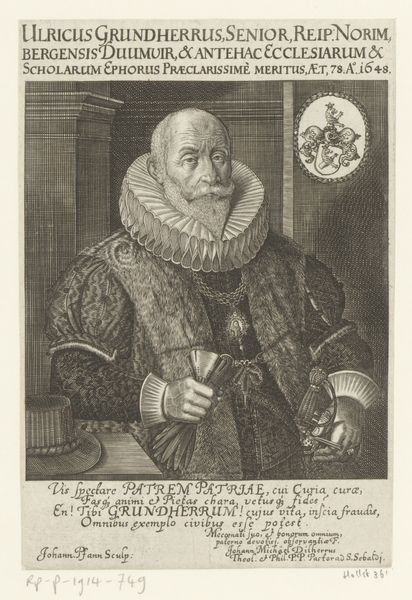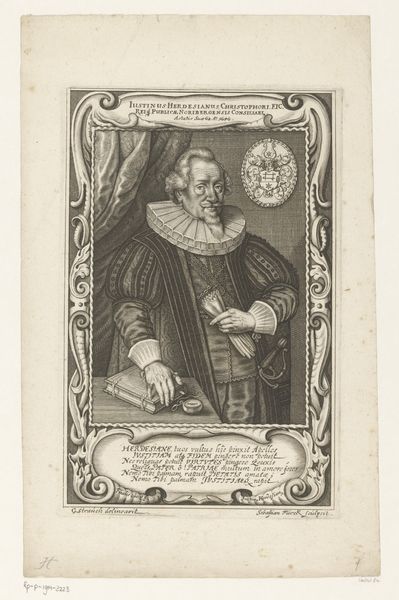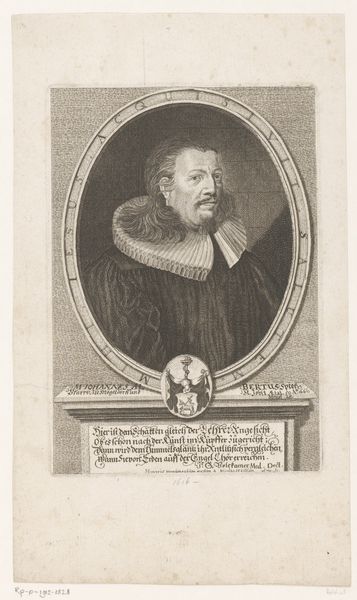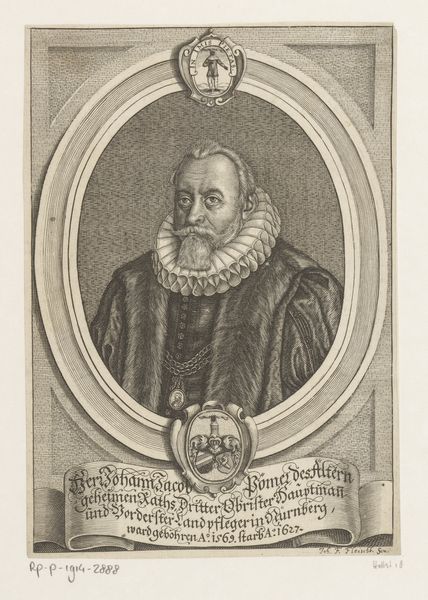
engraving
#
portrait
#
baroque
#
old engraving style
#
caricature
#
limited contrast and shading
#
engraving
Dimensions: height 155 mm, width 87 mm
Copyright: Rijks Museum: Open Domain
Editor: Here we have an engraving of Christian Brämer, dating back to sometime between 1689 and 1697. The details are really impressive. It almost feels like a character study, even though it's a formal portrait. What do you see in this piece, especially concerning the social context of its time? Curator: What strikes me is the framing of Brämer, quite literally. The decorative leaves and ribbons, paired with the inscription, tell us this isn't just a picture, but a carefully constructed statement. The rigid collar speaks volumes about the social constraints and expectations placed upon individuals, especially men, in the Baroque period. It signifies his position, perhaps as a man of status, religion, or academia. Who was this person in society? How might he have been both confined by and complicit in perpetuating the structures represented by that collar? Editor: I see what you mean. It’s not just a neutral depiction but actively creating an image. Does the artist's choice of engraving – with its precise lines – further reinforce that sense of rigid structure? Curator: Precisely. Engraving allows for a hyper-controlled depiction, minimizing fluidity. What implications does that have for our interpretation? Are we seeing a faithful representation, or a carefully curated performance of power? How do societal structures of class and faith impact portraiture of the time? I am also interested in the role of the text. It frames our understanding. Editor: It's interesting to think of it as a 'performance of power,' that portraits weren't always 'real.' Curator: Indeed. These are mediated images shaped by socio-political forces. Let’s think critically about the narrative presented and the hands involved in its creation.
Comments
No comments
Be the first to comment and join the conversation on the ultimate creative platform.
